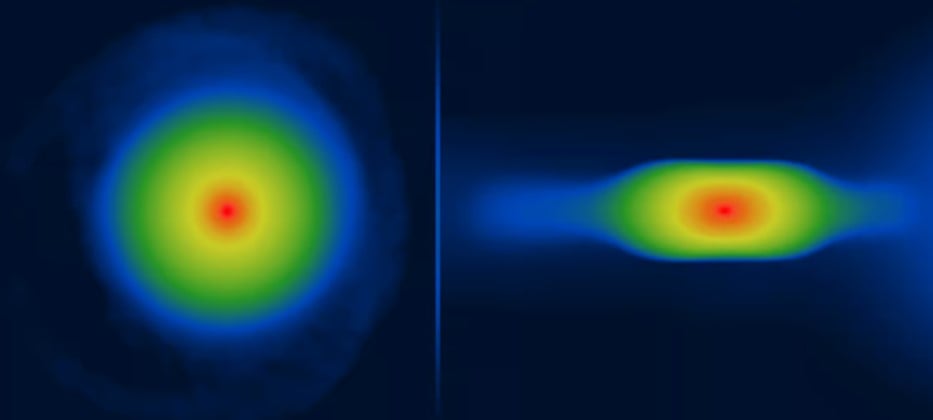
A Greek scientist at the University of Central Lancashire (UCLan) has just published new research that claims that the Earth may have been flat billions of years ago.
Dr Dimitris Stamatellos, Reader in Astrophysics at UCLan and co-investigator, said: “We have been studying planet formation for a long time but never before had we thought to check the shape of the planets as they form in the simulations. We had always assumed that they were spherical.
“We were very surprised that they turned out to be oblate spheroids, pretty similar to smarties!”
Planets are known to form out of protoplanetary discs – rings of dust and gas surrounding stars – but exactly how it happens is still up for debate. The most commonly accepted theory is called core accretion, where dust particles begin to stick together, forming larger and larger objects until they grow into planets.
A less-favored but still plausible model, called disc instability, is thought to happen much faster, when the disc cools and collapses into lumps that then become planets.
Flat earth theory
For the new study, the UCLan team under Stamatellos ran supercomputer simulations of planet formation, to investigate an aspect that’s mostly been overlooked – what shape do young planets take?
The researchers found that when planets form through the disc instability method, they don’t grow outwards evenly, staying in a sphere shape the whole time – instead, they tend to gather more material at their poles than their equators, stretching them out into an “oblate spheroid,” which is kind of a flattened oval shape. As the young planets grow, they would of course eventually take on their familiar spherical form.
While these are just simulations so far, the team says that observations of young planets, to see if any do have this strange shape, could help confirm or rule out the disc instability method of planet formation.
The researchers are following up this discovery with improved computational models to examine how the shape of these planets is affected by the environment in which they form, and to determine their chemical composition to compare with future observations from the James Webb Space Telescope (JWST).
Observations of young planets have become possible in the last few years with observing facilities such as the Atacama Large Millimetre Array (ALMA) and the Very Large Telescope (VLT).
The findings will be published in the peer-reviewed Astronomy & Astrophysics Letters journal.
Flat Earth is an archaic and scientifically disproven conception of the Earth’s shape as a plane or disk.
The idea of a spherical Earth appeared in ancient Greek philosophy with Pythagoras (6th century BC). However, most pre-Socratics (6th–5th century BC) retained the flat-Earth model.
In the early 4th century BC, Plato wrote about a spherical Earth. By about 330 BC, his former student Aristotle had provided strong empirical evidence for a spherical Earth. Knowledge of the Earth’s global shape gradually began to spread beyond the Hellenistic world.
See all the latest news from Greece and the world at Greekreporter.com. Contact our newsroom to report an update or send your story, photos and videos. Follow GR on Google News and subscribe here to our daily email!



